Marking the centennial of the Russian Revolution this year, The Hague Museum of Photography is hosting an exhibition of pictures capturing the last days of the Romanov family before their execution by Bolshevik soldiers. The photographs were taken by Pierre Gilliard, a tutor to the Romanov children and an intimate friend of the family.
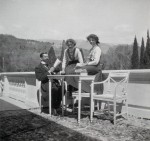 Pierre Gilliard was born in Vaud, Switzerland, in 1879. He became a teacher and, Swiss tutors being all the rage in aristocratic circles, in fall of 1904 accepted a position as French tutor to Duke Sergei, the son of Duke George of Leuchtenberg who was Tsar Nicholas II’s cousin. The family spent their summers at the Duke’s datcha at Peterhof on the south shore of the Gulf of Finland. Peter the Great built the Grand Palace of Peterhof, known as the Russian Versailles, while working on the construction of St. Petersburg, but he preferred his little maisonette of Monplaisir to the grandeur of the big house. Tsar Nicholas II avoided the giant formal palace too, spending the summers with his beloved family in the charmingly oxymoronic Cottage Palace.
Pierre Gilliard was born in Vaud, Switzerland, in 1879. He became a teacher and, Swiss tutors being all the rage in aristocratic circles, in fall of 1904 accepted a position as French tutor to Duke Sergei, the son of Duke George of Leuchtenberg who was Tsar Nicholas II’s cousin. The family spent their summers at the Duke’s datcha at Peterhof on the south shore of the Gulf of Finland. Peter the Great built the Grand Palace of Peterhof, known as the Russian Versailles, while working on the construction of St. Petersburg, but he preferred his little maisonette of Monplaisir to the grandeur of the big house. Tsar Nicholas II avoided the giant formal palace too, spending the summers with his beloved family in the charmingly oxymoronic Cottage Palace.
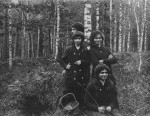 Tsarina Alexandra and the Duchess of Leuchtenberg were close friends and during the summer of 1905 the two families socialized often. That’s when Gilliard first met the imperial family. In September of 1905, Gilliard picked up two new pupils: the Grand Duchesses Olga and Tatiana, Nicholas and Alexandra’s eldest daughters, then 10 and eight years old respectively. In his memoirs he described them and their mother as polite and considerate and his pupils clever, albeit very much behind where he thought they should be in their command of French.
Tsarina Alexandra and the Duchess of Leuchtenberg were close friends and during the summer of 1905 the two families socialized often. That’s when Gilliard first met the imperial family. In September of 1905, Gilliard picked up two new pupils: the Grand Duchesses Olga and Tatiana, Nicholas and Alexandra’s eldest daughters, then 10 and eight years old respectively. In his memoirs he described them and their mother as polite and considerate and his pupils clever, albeit very much behind where he thought they should be in their command of French.
The third daughter, eight-year-old Grand Duchess Maria joined her sisters’ lessons in 1907, and Grand Duchess Anastasia followed in 1909. Gilliard continued to tutor Duke Sergei until 1909, after which he focused on his imperial students. He taught the girls in the Alexander Palace at Tsarskoye Selo five times a week as long as they were in residence, and when the Grand Duchesses failed to make as much progress as Gilliard, the Tsar and Tsarina had hoped, he joined the family during their months-long summer sojourns at Livadia Palace in the Crimea.
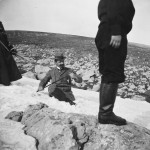 It is a testament to how trusted a member of the royal household Gilliard had become that he was given the responsibility of tutoring the Tsarevitch Alexei. The heir to the Russian Empire was a very sick little boy, afflicted terribly by the hemophilia that Queen Victoria’s genes had spread throughout the royal families of Europe. (Alexandra’s mother was Princess Alice, Victoria’s favorite daughter.) His illness was a state secret and hidden from everyone. Gilliard was one of a very small inner circle who knew how sick he was and from what.
It is a testament to how trusted a member of the royal household Gilliard had become that he was given the responsibility of tutoring the Tsarevitch Alexei. The heir to the Russian Empire was a very sick little boy, afflicted terribly by the hemophilia that Queen Victoria’s genes had spread throughout the royal families of Europe. (Alexandra’s mother was Princess Alice, Victoria’s favorite daughter.) His illness was a state secret and hidden from everyone. Gilliard was one of a very small inner circle who knew how sick he was and from what.
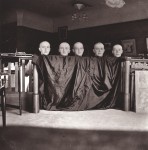 So close was he to the Tsar’s family that he chose to join them in exile after the February Revolution and Nicholas’ abdication in August of 1917. The family and a select group of the most loyal family and retainers were first confined to Tsarskoye Selo for five months and then sent to Tobolsk, Siberia, where they lived in the Governor’s Mansion. It was no Grand Palace, but it was downright luxurious compared to what was to come. When the White Army got too close to Tobolsk in April of 1918, the Romanov’s were moved to Yekaterinburg. They were imprisoned in Ipatiev House, the home of local industrialist, and were subjected to a million petty indignities by their Bolshevik guards.
So close was he to the Tsar’s family that he chose to join them in exile after the February Revolution and Nicholas’ abdication in August of 1917. The family and a select group of the most loyal family and retainers were first confined to Tsarskoye Selo for five months and then sent to Tobolsk, Siberia, where they lived in the Governor’s Mansion. It was no Grand Palace, but it was downright luxurious compared to what was to come. When the White Army got too close to Tobolsk in April of 1918, the Romanov’s were moved to Yekaterinburg. They were imprisoned in Ipatiev House, the home of local industrialist, and were subjected to a million petty indignities by their Bolshevik guards.
 Gilliard went with them as far as he could. He made it to the train platform at Yekaterinburg, but then, for some unfathomable reason, the Bolsheviks refused to let him out of the train and told him he was free to go. He didn’t go. He remained in the city hoping to catch a glimpse of the imperial family, a glimpse he never got. The Tsar, Tsarina, Tsarevitch and Grand Duchesses were shot and bayoneted to death on July 17th, 1918.
Gilliard went with them as far as he could. He made it to the train platform at Yekaterinburg, but then, for some unfathomable reason, the Bolsheviks refused to let him out of the train and told him he was free to go. He didn’t go. He remained in the city hoping to catch a glimpse of the imperial family, a glimpse he never got. The Tsar, Tsarina, Tsarevitch and Grand Duchesses were shot and bayoneted to death on July 17th, 1918.
In Gilliard’s memoirs, Thirteen Years at the Russian Court, he wrote movingly about what a loving, close family they were, all the more so under the extreme duress of their last days. He describes entering Ipatiev House on July 25th after the fall of Yekaterinburg and the Bolshevik announcement that the Tsar, and only the Tsar, had been executed while the rest of the family was in a “safe location.”
I went down to the bottom floor, the greater part of which was below the level of the ground. It was with intense emotion that I entered the room in which perhaps – I was still in doubt – they had met their death. Its appearance was sinister beyond expression. The only light filtered through a barred window at the height of a man’s head. The walls and flour showed numerous traces of bullets and bayonet scars. The first glance showed that an odious crime had been perpetrated there and that several people had been done to death. But who? How?
I became convinced that the Tsar had perished and, granting that, I could not believe that the Tsarina had survived him. At Tobolsk, when Commissary Yakovlev had come to take away the Tsar, I had seen her throw herself in where the danger seemed to her greatest. I had seen her, brokenhearted after hours of mental torture, torn desperately between her feelings as a wife and a mother, abandon her sick boy to follow the husband whose life seemed in danger. Yes, it was possible they might have died together, the victims of these brutes. But the children? They too massacred? I could not believe it. My whole being revolted at the idea. And yet everything proved that there had been many victims.
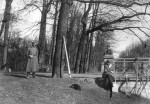 The Soviets continued to deny having slaughtered the imperial family until 1922. Gilliard stayed in Siberia for three years, helping magistrate Nicholas Sokolov investigate the murders. He married Alexandra Alexandrovna Tagleva, Grand Duchess Anastasia’s former nanny and one of the loyal few who went into exile with the Romanovs in 1919. They returned to Switzerland in 1922 where Gilliard returned to his study, becoming a professor of French at the University of Lausanne in 1926. He and his wife both interviewed Anna Anderson, the woman who claimed to be the Grand Duchess Anastasia, and concluded she was a fraud. Gilliard wrote a book debunking her claims, but there was so much mystique around the alleged Anastasia that plenty of people bought her ludicrous story until DNA evidence proved once and for all that she was a mentally ill Polish factory worker by the name of Franziska Schanzkowska. He also debunked the first of many Alexei impostors.
The Soviets continued to deny having slaughtered the imperial family until 1922. Gilliard stayed in Siberia for three years, helping magistrate Nicholas Sokolov investigate the murders. He married Alexandra Alexandrovna Tagleva, Grand Duchess Anastasia’s former nanny and one of the loyal few who went into exile with the Romanovs in 1919. They returned to Switzerland in 1922 where Gilliard returned to his study, becoming a professor of French at the University of Lausanne in 1926. He and his wife both interviewed Anna Anderson, the woman who claimed to be the Grand Duchess Anastasia, and concluded she was a fraud. Gilliard wrote a book debunking her claims, but there was so much mystique around the alleged Anastasia that plenty of people bought her ludicrous story until DNA evidence proved once and for all that she was a mentally ill Polish factory worker by the name of Franziska Schanzkowska. He also debunked the first of many Alexei impostors.
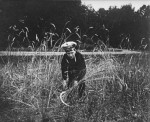 An avid amateur photographer, Gilliard took many pictures of the family at leisure — Alexei playing with his dog Joy, the Grand Duchesses putting on a Moliere play, the Tsar shoveling snow — and on official occasions. The original negatives are now in the collection of the Musée de l’Elysée in Lausanne. For the new exhibition at the Hague Museum of Photography, more than 70 enlarged gelatin silver prints have been made from those original negatives. I hope they digitize them all because there are a lot of sad, grainy, copies-of-copies of Gilliard’s pictures out there. It would be wonderful to be able to see the last happy days of the Romanovs in high resolution. The exhibition runs through June 11th of the this year.
An avid amateur photographer, Gilliard took many pictures of the family at leisure — Alexei playing with his dog Joy, the Grand Duchesses putting on a Moliere play, the Tsar shoveling snow — and on official occasions. The original negatives are now in the collection of the Musée de l’Elysée in Lausanne. For the new exhibition at the Hague Museum of Photography, more than 70 enlarged gelatin silver prints have been made from those original negatives. I hope they digitize them all because there are a lot of sad, grainy, copies-of-copies of Gilliard’s pictures out there. It would be wonderful to be able to see the last happy days of the Romanovs in high resolution. The exhibition runs through June 11th of the this year.